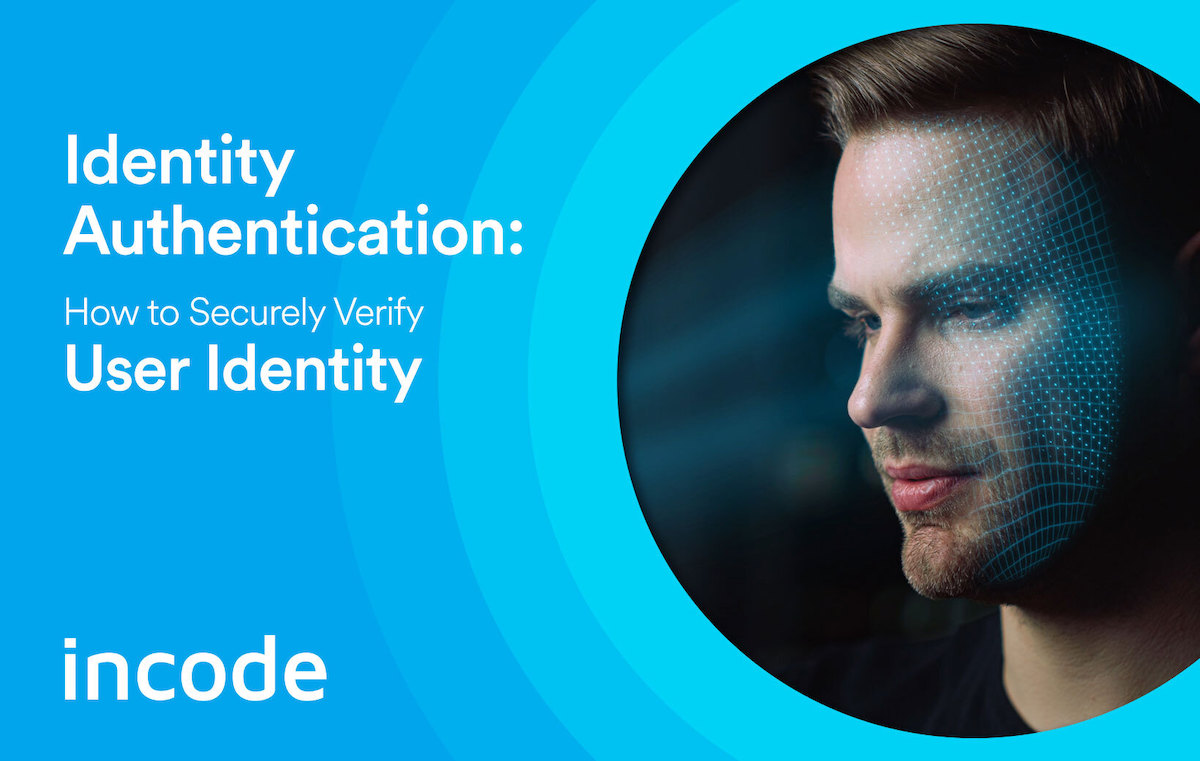Identity verification and authentication are essential for secure transitions, data, and account activity. Yet, these terms can be confusing or interchanged in an evolving digital world. Your company can alleviate complicated onboarding and log-in requirements while boosting security and efficacy by creating a quality identity identification and authentication process.
To understand what processes you should implement with your business, you must first understand the importance and differences between identity authentication and verification. Then we will explore the benefits of adopting cutting-edge authentication methods known as biometric authentication.
What is Identity Authentication?
Identity authentication refers to the process used to validate a user’s identity. This validation enables the user to access a device or sign in to an account.
For the average person, identity authentication is performed so frequently that it is part of everyday life. You may log into your bank account to check your balance, enter your password to change your phone settings, or log in to a website to purchase an item.
Nevertheless, standard forms of identity authentication can be easily hacked — leaving your information vulnerable and even compromised. With frictionless biometric authentication, you can secure your data and prevent fraudulent activity.
What is Identity Proofing?
Identity proofing frequently referred to as identity verification, determines if you are who you say you are to prove your identity.
For example, a retirement account may ask you to upload your government-issued ID or provide your Social Security number to prove your identity. Identity proofing may not always occur digitally. Some companies may require you to present physical documents or an ID in person; consider how some hotels need you to show your ID.
Some organizations may require you to fill out knowledge-based identity proofing questions, such as, “What was your childhood pet’s name?” or “What is your mother’s maiden name?”. The answers to these questions are used to confirm your identity at a later date (often for password reset purposes). Whatever the method, identity proofing is used to confirm your identity to minimize fraud and increase your protection.
Identity Verification vs. Authentication
While both identity verification and identity authentication are involved in confirming your identity and helping prevent fraud, they perform different roles.
Verification confirms that you exist through Personally Identifiable Information or PII. Authentication, alternatively, ensures that you have the right to access a specific account or page. This is done through passwords, one-time codes, or multifactor authentication. Authentication is designed to keep anyone but you from accessing your account information.
In essence, verification establishes your identity, whereas authentication establishes you are the verified account user. Both are necessary for account security, meaning your process for onboarding employees or customers requires you to think through your methods for both.
What are the Top Ways of Authenticating User Identity?
There are several industry-standard approaches to performing identity authentication. Different organizations may prefer one form over another based on the sensitivity or privacy of their business. Financial institutions may require more forms of authentication than, say, a retail store.
1. Passwords
The most heavily used authentication method is passwords. Users provide their username and password upon logging into a site. If correct, account access is granted to the user. Despite being widely used, the password system can be easily hacked and is the least comprehensive authentication process.
2. One Time Password (OTP)
One-time passwords work to confirm you are the individual accessing an account by sending a code to the account holder’s email or phone. Upon logging in, a site may require you to enter the random passcode sent to your device. These codes can only be used once and are only valid for a designated amount of time, such as half an hour. This supports the security of the OTP system.
3. Two-Factor Authentication (2FA)
Two-factor authentication is a form of identity authentication that requires the user to input another form of authentication beyond the standard username and password. Two-factor authentication often uses one-time passwords as the additional verification method. Alternatively, some systems require the use of 2FA apps, where you can retrieve the necessary code for verification.
4. Biometric Authentication
Biometric authentication is a growing alternative for confirming identity. This form of authentication relies on the user’s unique biological characteristics, including fingerprints, vocal recognition, iris scans, facial recognition, ear shape, and even vein patterns. While hackers can spoof some forms of biometric authentication to receive account access, these forms are lauded as more secure than their counterparts.
- Fingerprint Scanners: These scanners detect the unique patterns on an individual’s finger to determine if it matches the fingerprints provided by the owner or account holder.
- Voice Biometrics: This form of authentication relies on unique characteristics provided by the user’s voice and throat. It is sometimes referred to as voice recognition.
- Iris Scans: The iris is the colored part of the eye. Each person’s iris is composed of unique characteristics, such as patterns. Near-infrared (NIR) sensors identify these distinct patterns and correlate an individual’s iris with their identity.
- Facial Recognition: Facial recognition uses software to map the unique points on a person’s face. These nodal points create a “faceprint” that can be used as a unique identification method.
- Vein ID: This ID authentication method determines a person’s identity based on the unique vein pattern visible from the surface of a finger. This is also referred to as vascular identification. Some champion this method as more secure than fingerprint scanners, which can be fraudulently replicated, though it is difficult to do so.
Understanding Digital Identity and Data Protection in Your Business
Implementing secure identity authentication methods can protect you, your company, and your customer from data breaches and fraudulent activity. Additionally, quick and safe methods of ID authentication can create a positive customer experience as they use and interact with your site.
The benefit extends to internal processes as well. When onboarding new customers, a cumbersome or inadequate ID verification and authentication method can delay the onboarding process or create opportunities for fraud. When hiring new employees, a secure process can support the effective onboarding of personal identity documents and Social Security numbers — information most employees want to be kept confidential.
AI and Identity Authentication: A Modern Solution
You can create a seamless verification and authentication experience for your employees and customers through AI-based platforms. AI-based platforms are simple, secure, and easy to implement. The benefits of an AI identity authentication service are vast.
With Incode’s AI software for businesses, you can:
- Implement selfie verification
- Perform a government biometric check
- Use face log-in, with or without additional password verification
- Ensure non-repudiation of transactions and agreements
- Increase the security and accuracy of onboarding
Learn why many of our customers choose Incode for their modern digital security needs.
Get Started with Identity Verification and Identity Services
You can prevent identity theft and costly delays when you take the identity authentication process into your hands. With Incode working for you, you can better protect your business’ data and customers while increasing the ease and satisfaction associated with identity authentication. Learn more about how Incode can create more secure interactions while delighting your customers.

